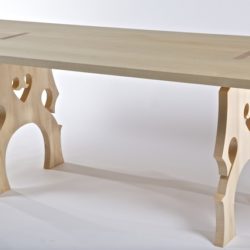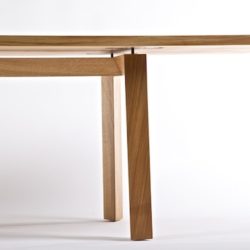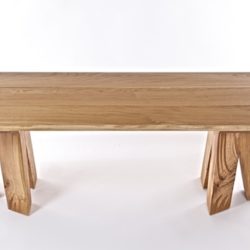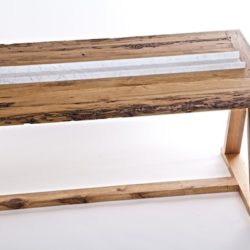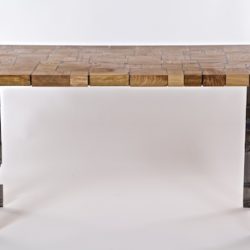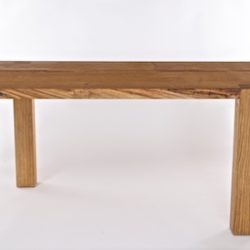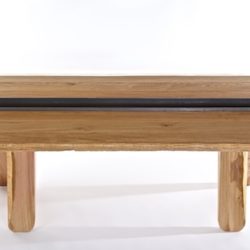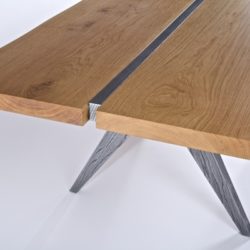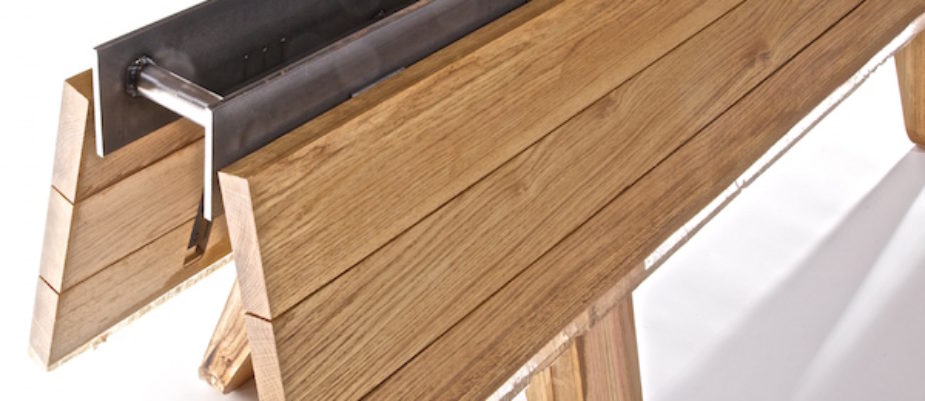
13 tables designed by 13 great designers and inspired by the concept of sharing and sustainability, this was Riva 1920 ‘s “Christmas present” for the new Refettorio Ambrosiano in Milan, a disused theatre in the suburbs of Milan that Caritas Ambrosiana has turned into an unique space where design meets solidarity, “where the beauty of offering food and comfort to the poorest can be valued by the very best of the contemporary Italian art and design”.
The Refettorio Ambrosiano is borned from an idea of the chef Massimo Bottura and Davide Rampello, in collaboration with the Diocesan Curia of Milan and the Caritas Ambrosiana.
The Italian wooden furniture company Riva1920 has produced 5 copies of each table. On one copy, that will remain in the Refettorio, great quality dishes, cooked by great chefs using the leftover products from EXPO, will be served to the poor.
The other copies will be sold to collect money in behalf of the Refettorio.
The designers involved in the project are: Mario Bellini, Pierluigi Cerri, Aldo Cibic, Antonio Citterio, Michele De Lucchi, Giulio Iacchetti, Piero Lissoni, Alessandro Mendini, Fabio Novembre, Franco Origoni, Italo Rota, Patricia Urquiola, Terry Dwan.
Text by Gabriele Masi.
Captions
Feature image: Canal by Patricia Urquiola.
1 Tavola Armonica, Mario Bellini. Solid oak dining table. Oak wood top. Maple wood base. Natural oil finish. 75 x 250 x 80 cm.
The legs are inspired by a cello, an amplifying element of voices, experiences and emotions, a common language, a bridge that is able to put togheter different stories.
2 Otto, Pierluigi Cerri and Philippe Casens. Solid oak dining table. Oak wood top. Coloured iron base. Natural oil finish. 75 x 250 x 80 cm.
“A table is like a little building that sum up the author’s view of the world” Pierluigi Cerri said, “Otto is a table with a great saving of expressive and structural elements aimed to stress out its most important function: hospitality.
3 Piedone, Aldo Cibic. Solid oak dining table. The table legs are carved out. from a solid wood block. Natural oil finish. 75 x 250 x 80 cm.
“Our aim was to make a table that has always existed, without any design virtuosity. Since it has always existed, it should have been made to let it exist forever”, the author said.
4 Convivium, Antonio Citterio. Solid oak dining table (Venice’s briccole). The central bowl is made of Carrara marble. Natural oil finish. 75 x 250 x 80 cm.
Not only people and their stories, but also recycled materials meet on the rough surface of the “Venice crumbs” and the smooth one of marble: “real” materials, consumed by and along with the time, where remembers can sediment almost to tell an incredible story.
5 ReBlocks, Terry Dwan. Solid oak table. The top is made of blocks of waste wood assembled with resin. The base is made of pieces of waste iron soldered.Natural oil finish. 80 x 250 x 90 cm.
For Terry Dwan recycling is the future. “Wastes are not anymore wastes thanks to the idea of putting them togheter to create a new object. Today we are all connected and depending mutually as these pieces of wood are in my creation”.
6 Greco, Piero Lissoni. Solid oak dining table. Natural oil finish. 75 x 250 x 80 cm.
“To make a table you have to put a soul in it, an aesthetic and functional one, a shape, and a little bit of intelligence in the use of the material”. The main peculiarity of Greco is the asymmetrical disposition of the four legs that gives new life to the corners, stressing out the concept of sharing and reducing the importance of the head of the table.
7 Canal, Patricia Urquiola. Solid oak dining table. The table top features extending sides and a central bowl. Natural oil finish. 75 x 250 x 80 cm.
The most interesting peculiarity of Canal is the central bowl, a channel for food and drinks, that at the sides takes the shape of an handle to carry the openable table.
8 Tino, Franco and Matteo Origoni. Solid oak dining table. The table legs are made of solid oak and grey-coloured. Natural oil finish. 75 x 250 x 80 cm.
The peculiarity of Tino is the disposition of its five common elements of a table: the transverse bar is collocated upside, dividing the top in two sides.
Photos by Marco Scarpa.

